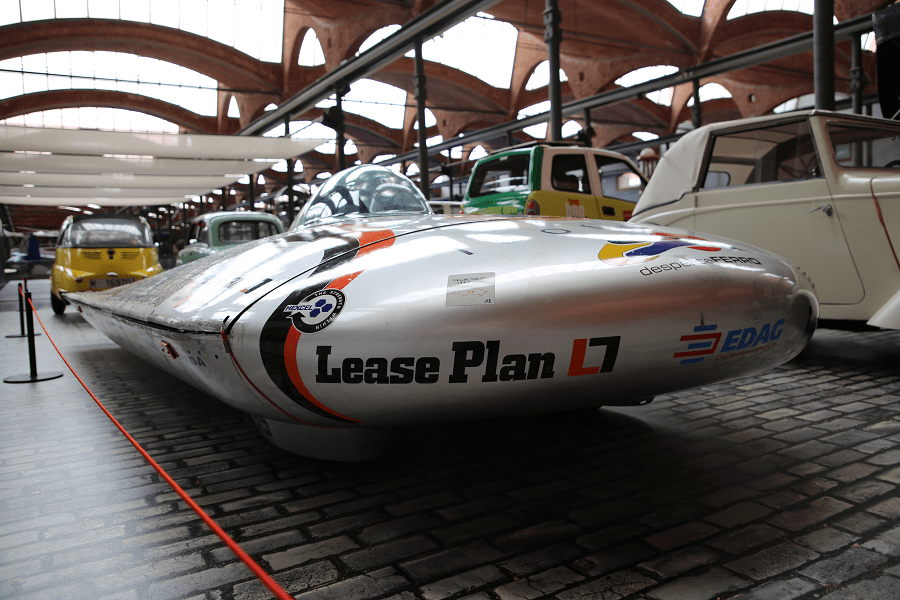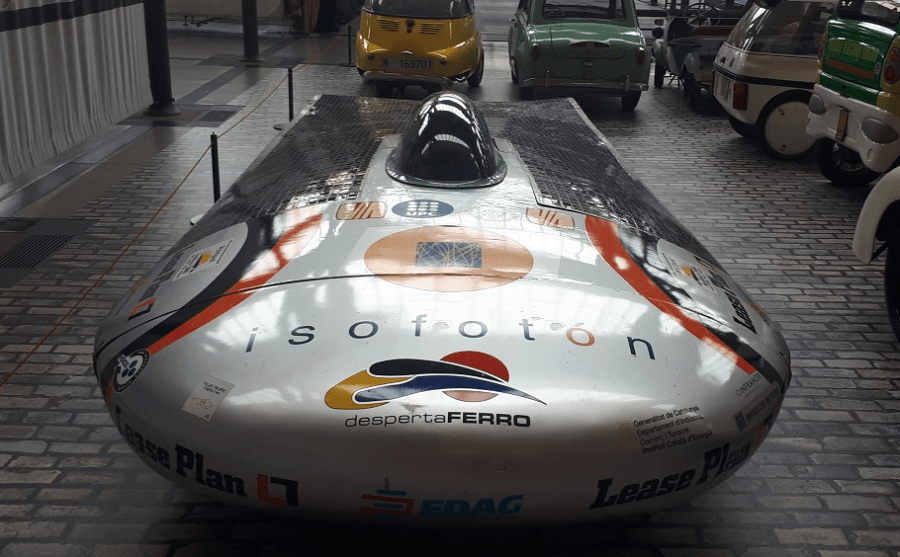Prototype of a solar car in the National Museum of Science and Industry of Catalonia
A solar car is a solar vehicle for use on public roads or race tracks. Solar vehicles are electric vehicles that use self-contained solar cells to power themselves fully or partially from sunlight. Solar vehicles typically contain a rechargeable battery to help regulate and store the energy from the solar cells and from regenerative braking. Some solar cars can be plugged into external power sources to supplement the power of sunlight used to charge their battery.
Solar cars combine technology typically used in the aerospace, bicycle, alternative energy and automotive industries. The design of solar vehicles always emphasizes energy efficiency to make maximum use of the limited amount of energy they can receive from sunlight. Most solar cars have been built for the purpose of solar car races. However several prototypes of solar cars designed for use on public roads have been designed and built.
There are various solar car competitions around the world that are generally partaken by collegiate and company teams. The most notable competitions is the World Solar Challenge, which is an international competition that takes place in Australia. Some other competitions include the American Solar Challenge and the United Solar Challenge.
As of December 2022, only one solar car had reached production, the Lightyear 0, but at the limited delivery rate of one car a week. In January 2023 the company halted vehicle manufacture and sales, and the vehicle maker’s production company, Atlas Technologies B.V., requested bankruptcy protection.
The Aptera’s production is expected to start in 2024.
Solar cars depend on a solar array that uses photovoltaic cells (PV cells) to convert sunlight into electricity. Unlike solar thermal energy which converts solar energy to heat, PV cells directly convert sunlight into electricity. When sunlight (photons) strike PV cells, they excite electrons and allow them to flow, creating an electric current. PV cells are made of semiconductor materials such as silicon and alloys of indium, gallium and nitrogen. Crystalline silicon is the most common material used and has an efficiency rate of 15–25%.














